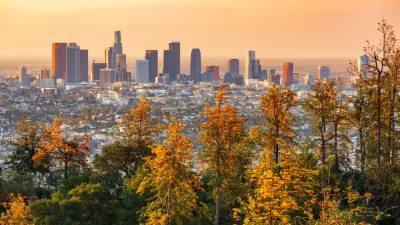The company's proposed $100 billion carbon capture project would require a "large-scale" public-private partnership and could capture up to 100 million tons of carbon per year.

"[L]ess than three months after the company announced plans to invest $3 billion into a new low-carbon solutions venture," Exxon has proposed a $100 billion carbon capture facility in Houston, citing the city's "large concentration of carbon-emitting industries" and "location near the Gulf of Mexico that could store large amounts of carbon dioxide safely and permanently," reports Paul Takahashi in the Houston Chronicle.
"The Irving oil major warned, however, that developing a so-called Houston CCS Innovation Zone -- billed as the biggest carbon sequestration project in the world -- would require a public-private partnership and government funding." Exxon is pushing for "an 'Innovation Zone' approach to dramatically accelerate Carbon Capture and Storage progress," calling for "the company along with many private and public partners to build a carbon capture facility to collect emissions from refineries, petrochemical plants and other industrial facilities along the Houston Ship Channel." The carbon would be stored in old oil and gas formations in the Gulf of Mexico, which is projected to have a capacity of 50 million tons of carbon dioxide annually by 2030, "more than all the carbon capture and storage projects operating globally" today.
"While European oil majors are investing heavily in wind and solar energy to prepare for a low-carbon future, U.S. oil giants are hanging their cowboy hats on carbon capture and storage, the decades-old, but expensive technology of extracting carbon dioxide from the air and storing it in deep underground reservoirs." Yet local leaders praise the proposal as an important step. Bobby Tudor, chair of the Greater Houston Partnership's Energy Transition initiative, called the plan a "key milestone" in the "global energy transition to a low-carbon future."
FULL STORY: Exxon eyes Houston for $100B carbon capture hub

Study: Maui’s Plan to Convert Vacation Rentals to Long-Term Housing Could Cause Nearly $1 Billion Economic Loss
The plan would reduce visitor accommodation by 25,% resulting in 1,900 jobs lost.

North Texas Transit Leaders Tout Benefits of TOD for Growing Region
At a summit focused on transit-oriented development, policymakers discussed how North Texas’ expanded light rail system can serve as a tool for economic growth.

Why Should We Subsidize Public Transportation?
Many public transit agencies face financial stress due to rising costs, declining fare revenue, and declining subsidies. Transit advocates must provide a strong business case for increasing public transit funding.

How Community Science Connects People, Parks, and Biodiversity
Community science engages people of all backgrounds in documenting local biodiversity, strengthening connections to nature, and contributing to global efforts like the City Nature Challenge to build a more inclusive and resilient future.

Alabama: Trump Terminates Settlements for Black Communities Harmed By Raw Sewage
Trump deemed the landmark civil rights agreement “illegal DEI and environmental justice policy.”

Dear Tesla Driver: “It’s not You, It’s Him.”
Amidst a booming bumper sticker industry, one writer offers solace to those asking, “Does this car make me look fascist?”
Urban Design for Planners 1: Software Tools
This six-course series explores essential urban design concepts using open source software and equips planners with the tools they need to participate fully in the urban design process.
Planning for Universal Design
Learn the tools for implementing Universal Design in planning regulations.
City of Santa Clarita
Ascent Environmental
Institute for Housing and Urban Development Studies (IHS)
City of Grandview
Harvard GSD Executive Education
Toledo-Lucas County Plan Commissions
Salt Lake City
NYU Wagner Graduate School of Public Service





























